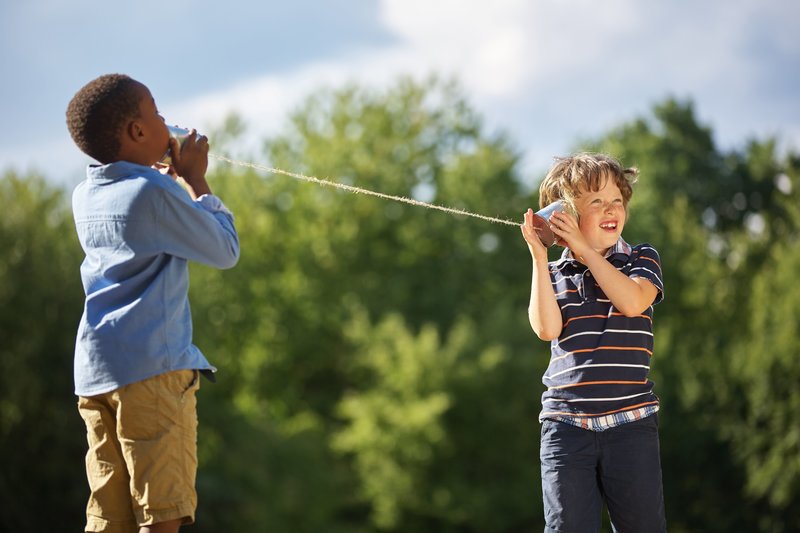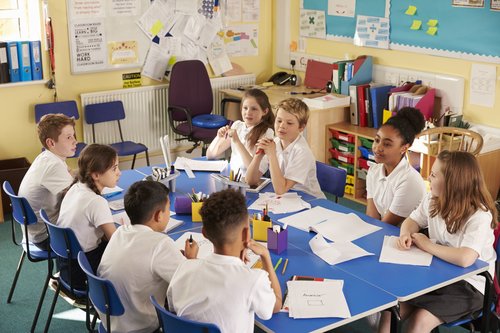
Articles
We aim to give food for thought as well as inspiring your creativity and
providing practical ideas you can’t wait to implement in your own settings!
Creating a Communication-Friendly Classroom
Communication is an essential tool for learning and life and part of our role as educators should be to help students become confident and effective communicators, able to build relationships and share ideas. In this article we share some practical ideas to help facilitate this in the classroom.

Factors to be aware of
There are different forms of communication: verbal, non-verbal, (active) listening, written and visual. We need to consider inclusivity and balance the needs of the range of students: their learning styles, neurodivergence, deafness and so on, when establishing successful pathways for communication within the classroom.
In addition, there are other factors which need to be reviewed when building good channels of communication between staff, students and parents/carers.
Are there possible language barriers? Do these require translation, interpretation, or the use of an app? If possible, learn some basic vocabulary in other languages: even the simple act of smiling and welcoming someone in their first language can have a positive effect on their school experience.
Are there cultural elements to be aware of? For example, in some cultures, making eye-contact is very important, but in others this can be seen as rude and defiant, so children may avoid this.
Does technology aid or hinder? Is it reliable and have users been trained appropriately? Planning on including technology as a key element of a lesson only to find it doesn’t work correctly can completely ruin and derail teaching points.
Are there potential physical or emotional barriers for individuals? Is the lighting too bright or too dim? Can the student manipulate the tools and equipment required by the activity? Does the individual have a fear of failure? Have they previously been mocked by others for making a mistake?
The topic of communication is vast and complex so in this piece, we are going to focus mainly on identifying a few ideas to help promote communication through talk within the classroom.
“…even the simple act of smiling and welcoming someone in their first language can have a positive effect on their school experience.”

Thoughts and ideas to promote talk and communication
• We need to ensure that we create a safe environment for everyone to make contributions, and to feel that these contributions are valued. This includes making sure that all adults within our classroom know in advance what has been planned so they can prepare for any input they would like to make.
• It is important to balance pace and patience when asking our pupils to engage; they need time to think, process and plan their responses. With some children, it can be beneficial to give them advance warning of topics which will be discussed, or time to practise sharing their contribution, e.g., by talking it through with someone else (an adult or child) or to delegate someone else to share the contribution on their behalf. The use of recording devices and mini whiteboards can also help with this procesIt is important to balance pace and patience when asking our pupils to engage; they need time to think, process and plan their responses. With some children, it can be beneficial to give them advance warning of topics which will be discussed, or time to practise sharing their contribution, e.g., by talking it through with someone else (an adult or child) or to delegate someone else to share the contribution on their behalf. The use of recording devices and mini whiteboards can also help with this process
• Excessive noise levels within the classroom can be detrimental to learning, but complete silence can also have a similar effect. Carefully planning different sections of lessons with different levels of talk is helpful, as is establishing clear and consistent signals for volume changes. This can be done using visual indicators such as a traffic light system, or a pointer on a chart showing whether it is time for voices off, whisper talk, partner talk, table talk or free chat. Whilst we may worry whether all pupils are engaged in topic-related talk, the more they want to make contributions in class and see the benefit to their learning, the more time they are likely to be on task. The inclusion of scheduled chat breaks part-way through sessions can also help maintain focus.

• Using a Reading Circle approach for sharing texts is effective in promoting meaningful discussion within a small group. The division and rotation of different tasks means that members of the group can express their ideas in different ways over a series of sessions.
• Scheduling time for a ‘Morning Meeting’ at the very start of the day can be a great way to get students focused and engaged on a common theme. This activity, which can be adapted to different ages and audiences, is useful for a variety of reasons. Primarily it helps children to connect with others, build conversation and listening skills, take part in discussion and debate, to share ideas and think creatively and critically.
o The suggestion is that each day’s Morning Meeting question is introduced and on display e.g., on the whiteboard, during registration for individual thought/reflection, then a few minutes are allocated for partner or group talk before volunteers share their ideas with the class. Adults should also participate, which gives them the chance to model expressing an answer and giving reasons to justify their view. This should help encourage students to extend their own responses.
o It is a good idea to cycle through different types of questions to inspire and entertain different thinkers. There are many examples available to download or you can create your own to match the needs and interests of your class. Here are some examples to get you started:
✔ If someone gave you £100, what would you do with it? Would you save any of it? What would you spend it on?
✔ What’s your favourite thing about yourself?
✔ Do you put the cereal in the bowl first or the milk?
✔ If you had a time machine, would you travel to the past or the future?
✔ If you could pick a new name for yourself, what would it be?
Obviously, this is just a small snapshot of some tried-and-tested talk-focused activities; there are many more ways to promote effective communication in the classroom which will help enable children to develop their confidence, independence and well-being.
Do let us know if you have any great tips on this topic!
With many thanks to Jayne Gilbert for writing this article.
Jayne is a teacher and English lead with over 30 years’ experience, both in primary schools and as a specialist tutor.